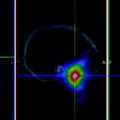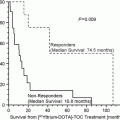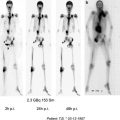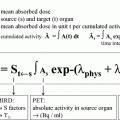5th Edition
6th Edition
Supplement
7th Edition
T1
Intrathyroidal tumour ≤1 cm
Intrathyroidal tumour ≤2 cm
Intrathyroidal tumour ≤1 cm (pT1a)
idem
Intrathyroidal tumour >1 and ≤ 2 cm (pT1b)
T3
Intrathyroidal tumour >4 cm
Intrathyroidal tumour >4 cm
Intrathyroidal tumour >4 cm (pT3a)
Intrathyroidal tumour >4 cm
Tumour with minimal extrathyroidal extension
Tumour with minimal extrathyroidal extension (pT3b)
Tumour with minimal extrathyroidal extension
T4
Extrathyroidal tumour
Tumour with massive extrathyroidal extension (pT4a/b)
idem
idem
N1a
Ipsilateral cervical metastasis
Metastasis to level VI
idem
idem
Table 2
Major changes of the AJCC/UICC TNM staging systems of thyroid carcinomas
5th Edition | 6th Edition | Supplement | 7th Edition | |
|---|---|---|---|---|
Stage II | M1 < 45 years | M1 < 45 years | idem | idem |
T2-3 ≥ 45 years | T2 ≥ 45 years | |||
Stage III | T4 or N1 ≥ 45 years | T1-3 N1a M0 ≥ 45 years | idem | idem |
T3 N0 M0 ≥ 45 years | ||||
Stage IV | M1 ≥ 45 years | T1-3 N1b M0 ≥ 45 years (IVA) | idem | idem |
T4a N0-1 M0 ≥ 45 years (IVA) | ||||
T4b N0-1 M0 ≥ 45 years (IVB) | ||||
M1 ≥ 45 years (IVC) |
The criticism lead to the publication of the TNM supplement in 2003 (Wittekind et al. 2003). However, the comments and elaborations on the categories T1 and T3 favoured the confusion of terms. In particular, the denotations of uni- and multifocality of the 5th edition collided with the introduced subclassifications T1a/b and T3a/b of the 6th edition. In addition, the specified changes did not solve the problem of lacking compatibility of the 5th and 6th edition.
2 Current AJCC/UICC TNM Classification
Recently, the 7th edition (2009) of the TNM classification has been published (Sobin et al. 2009). There have been only little changes as compared to the 6th edition (2002). However, the main controversial alterations of the 5th edition (1997) have been adopted almost as they stood. In particular, these debatable changes refer to the classification of microcarcinomas, advanced thyroid carcinomas and lymph node metastases.
2.1 Microcarcinomas
The conception of the “microcarcinoma” was introduced for the small differentiated thyroid carcinoma up to 1 cm because of its excellent prognosis with survival rates indistinguishable from those of the normal population (Rosai et al. 2003; DeLellis et al. 2004; Fink et al. 1996; Piersanti et al. 2003). In these cases a less radical approach is favoured—without complete thyroidectomy and subsequent radioiodine ablation (Dietlein et al. 2007; Rahbar et al. 2008). With respect to the 5th edition of the AJCC/UICC TNM classification the large majority of microcarcinomas agreed with the T1-category. Unfortunately, the microcarcinomas were not reflected in the 6th edition because T1 then comprised tumours up to 2 cm in size (Table 1). Thus, an orientation towards stage T1 according to the current AJCC/UICC TNM classification was no longer feasible. The German stakeholders agree that an extension of the group with non-radical treatment to patients with tumours of 2 cm is not justified. Therefore, the tumour size had to be documented in addition to the primary tumour stage. With respect to this difficulty, a supplement was published shortly after the introduction of the 6th edition of the TNM classification in order to divide T1-tumours into T1a for all tumours ≤1 cm and T1b for all tumours >1 cm but ≤2 cm (Wittekind et al. 2003). The proposal to classify T1-tumours into T1a and T1b was adopted in the current 7th edition of the TNM system (Sobin et al. 2009).
2.2 Advanced Thyroid Carcinomas
A further alteration since the 5th edition is that advanced thyroid carcinomas are considered differentially in the subsequent AJCC/UICC TNM classifications. In the 5th edition, all tumours with extrathyroidal extension were categorised as T4 (Sobin and Wittekind 1997). Until 2006, no studies had investigated the impact of differences in the degree of extrathyroidal extension on the prognosis of patients with thyroid cancer (Ito et al. 2006a, b, 2007; Riemann et al. 2010). However, in 2002, tumours with only minimal extension to perithyroid tissues and the sternothyroid muscle were categorised as T3, while those with massive extrathyroid extension were classified as T4a/b (Sobin and Wittekind 2002). Thus, the revised T3 category integrated intrathyroidal tumours ≥4 cm and those with minimal extrathyroidal growth, independent of the tumour size. The rationale of these alterations was improved user friendliness by harmonisation with the other head-and-neck tumours and not based on scientific findings. In 2003, Wittekind et al. proposed to divide the hitherto T3-classification into T3a for all intrathyroidal tumours >4 cm and T3b for all tumours with minimal extrathyroidal extension in order to account for their different biology (Wittekind et al. 2003). Unfortunately, the recommendation to divide T3 tumours was not adopted in the 7th edition of the AJCC/UICC TNM classification. However, the reassignment of these tumours with intra- and extrathyroidal growth to T3a- and T3b-categories, respectively, will be discussed in the context of the next AJCC/UICC TNM supplement (K. W. Schmid, personal communication).
2.3 Lymph Node Metastasis
The prognostic significance of lymph node metastases is still controversial. While it is generally accepted that lymph node metastases are associated with an increased rate of tumour recurrence only a few studies could show a significant influence on survival (Bellantone et al. 1998; Hughes et al. 1996; Scheumann et al. 1994). The prognostic significance of micrometastases, however, is unknown. And despite high frequencies of microscopic lymph node metastases (60–90 %) only 5–15 % of patients with papillary thyroid carcinomas in whom no prophylactic dissection was performed develop nodes at a later time. According to the 6th and 7th edition of the AJCC/UICC TNM classification a lymph node dissection of the central compartment should be performed for staging purposes in case of preoperatively known malignancy. Until 2002, the AJCC/UICC TNM staging of lymph nodes was based on the surgical anatomy of the cervicomediastinal lymph node system established by Dralle et al. (1992). In particular, the following topographic compartments were defined:
Compartment 1: The cervicocentral lymph node system, right and left of the trachea, between the trachea and carotid sheath, and from the hyoid bone down to the brachiocephalic vein, including the submandibular lymph nodes.
Stay updated, free articles. Join our Telegram channel

Full access? Get Clinical Tree








